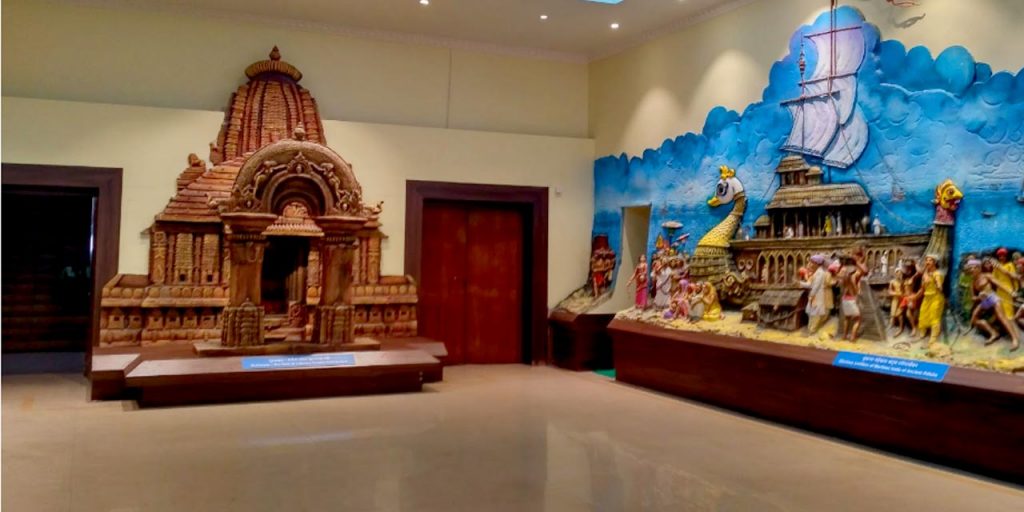International Museum Day- May 18
Museums provide an insight into the history of humankind. These hallowed halls are where history breathes, art whispers, and knowledge awakens. They are also the windows through which we glimpse the diversity of human experiences.
For centuries, museums have stood as sanctuaries of knowledge, repositories of our collective past. They are the guardians of our cultural DNA, preserving fragments of civilisations that would otherwise fade into obscurity.
In a bid to promote museums as tools for cultural exchange, enrichment of cultures, and development of mutual understanding, cooperation, and peace among peoples, International Museum Day has been celebrated every year May 18 since 1977 by the International Council of Museums (ICOM).
Ahead of International Museum Day, a couple of curators of Bhubaneswar-based museums shared with Sunday POST about the significance of museums and what they have to offer.
Bharati Pal, the curator of the Odisha State Museum (OSM), said the museum was established in 1932 at Ravenshaw College but it was later shifted to Bhubaneswar in 1960.
Talking about OSM’s special offer on International Museum Day, Pal reveals, “The museum offers free entry to all visitors on this day so that they can explore various galleries, including Archaeology, Contemporary Art, Epigraphy, Numismatic, Arms and Ammunitions, Art and Craft, Mining & Geology, Anthropology, Sanskrit Manuscripts, and Patta Paintings.”
She also highlights that the museum accepts donations of old artefacts from individuals to preserve them.
“We have preserved various types of donations in the past. Recently, a casket (sinduka) from a person’s ancestral home has now become a cherished possession of our museum,” said an elated Pal.
The museum has facilities for all age groups and showcases a wide range of artefacts.
On the special attraction the museum has to offer, she continued: “We have a 40-minute light and sound show every day about the history of the 1817 Paika Rebellion, featuring legendary personalities, boosting footfall at the museum.”
Though a large number of visitors are seen on museum premises at the moment, the authorities have arranged an online tour of the museum like others during the COVID-19 pandemic.
Manuscript and Archaeology galleries were the most preferred by visitors during that period, recalls Pal.
She recommends that schools and colleges send their students to the museum to explore and learn more about the past and research how the artefacts are preserved. The museum has artefacts dating from the 13th century to the present day, and they have plans to open new galleries such as aquariums and paika rebellion.
The OSM has made arrangements for the kids, such as a children’s park and installed different statues in the garden for visitors to explore. The staffs are also committed to taking care of visitors’ needs as much as possible and helping them explore the museum fully, Pal signs off.
Gaurav, the Scientist D/HO of the Regional Museum of Natural History, believes that museums offer immersive experiences that enable visitors to gain knowledge about nature, biodiversity, and the significance of environmental conservation. The museum he oversees is dedicated to preserving the natural history of the state.
Elaborating more, he continued: “Through interactive exhibits and dioramas, the museum provides an engaging and spectacular experience for its visitors. Its primary goal is to raise awareness about the rich biodiversity of Odisha and the urgent need for conservation. By showcasing the beauty and fragility of natural ecosystems, the museum aims to inspire its visitors to become responsible stewards of the environment.”
Gourav underlined the critical role museums play in educating the public about environmental conservation and sustainability. He says that International Museum Day provides an opportunity to reach a wider audience, inspiring them to appreciate and protect the natural world. Through interactive exhibits and educational programmes, the museum strives to instill a sense of responsibility towards the environment in every visitor, he added.
Asked about the special plans, he regretted informing Sunday POST that due to ongoing civil construction work at the museum, they are unable to offer anything spectacular this International Museum Day.
Nevertheless, they are ensuring the continuation of their month-long programme called Meri Life, which aims to raise awareness about sustainable environments and engage as many people as possible, he said.
The museum, established in 1995, comprises three main galleries: Unique Creations of Nature, Biodiversity of Odisha, and Herpetofauna Gallery. Additionally, there is a Discovery Centre for kids and various other exhibits and displays.
When asked about virtual tours of museums, Gaurav personally expresses his reservations about the idea. He presents an analogy using the example of Rasagola, a popular Indian sweet. If given a choice between a photograph of Rasagola and an actual plate of Rasagola, most people would choose the latter because it provides a more sensory experience. He said the same principle applies to museum collections.
“Physically visiting a museum and having the opportunity to take a close look at the exhibits creates a far more impactful and meaningful experience compared to virtual tours, which only provide around 10–12% of the actual experience,” he pointed out.
While acknowledging the usefulness of smartphones and modern technology, he asserts that personally experiencing the museum in person provides a unique sense of satisfaction and fulfilment. He encourages people to visit the museum, where they can touch and feel the texture of certain collections, enhancing their overall learning experience.
